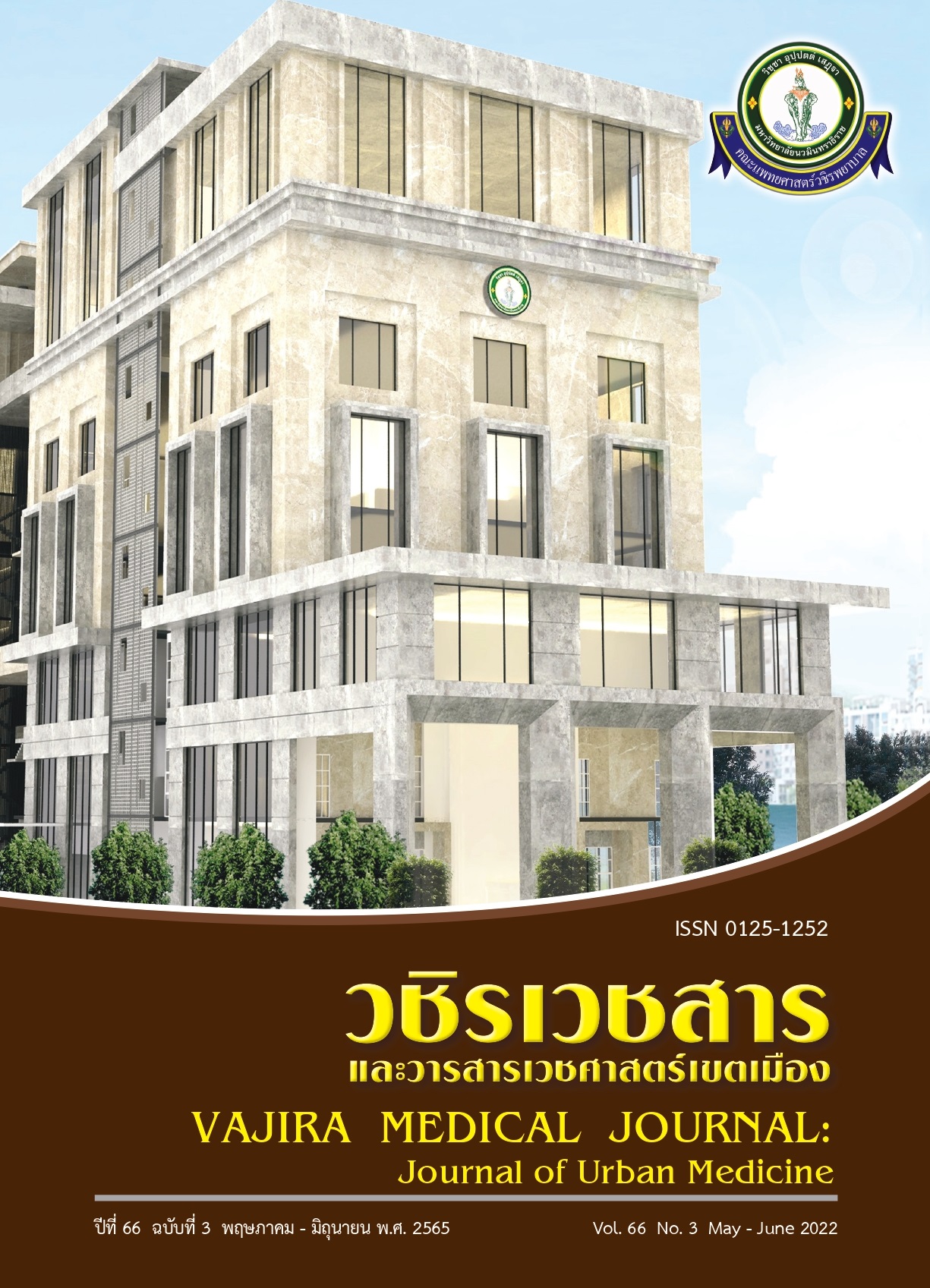Family Problems of Adolescent Students in the Sex-Risk Group and the Non Sex-Risk Group in a Province in the Metropolitan Area of Bangkok
Main Article Content
Abstract
Objectives: To study family problems and the association of family problems of adolescent students in the sex-risk group and the non sex-risk group in Bangkok.
Methods: Research design was descriptive correlation study.There were 2 groups of samples, the sex-risk group and the non sex-risk group. The sex-risk group consisted of 325 female adolescent students who were selected by purposive sampling with the social dimension form constructed by the researchers. The social dimension form contained 6 risk behaviors and 8 general data. The female adolescent students who had one of the six risks and were confirmed by the classroom teacher would be listed in the sex-risk group. The non sex-risk group consisted of 319 female adolescent students who were not listed in the sex-risk group. The research tools were the questionnaires consisted of family problems, risk behaviors of the parents, parental control, family break-ups and family economic status. There were 21 questions of true-false answers with 1 score for the true answer and 0 score for the false answer. The data were collected from the samples and were analyzed by percent and X2-test.
Results: Overall, the sex-risk group and the non sex-risk group had very low levels of family problems (35.4% and 20.1% respectively). However, the sex-risk group had more problems than the non sex-risk group with statistical significance (p<0.01). When considering items of family problems, it was found that the sex-risk group had more problems in 19 of 21 items than the non sex-risk group. The two most common problems, which were at average level (>50%), were item 17: father and mother did not allow the children to go out with friends (X2 =21.0) and item 1: father worked outside with little time to talk to the children (X2 =18.3).
Conclusion: The family problems were found in the sex-risk group more than the non-sex risk group with statistical significance.
Downloads
Article Details

This work is licensed under a Creative Commons Attribution-NonCommercial-NoDerivatives 4.0 International License.
References
Kensee K, Sontirat S. Behavioral Imitation, Family Relationship, Life Skill and Risk Sexual Behavior of Primary Grade 6 Student at Nong Chok District in Bangkok Metropolitan. J of Soc Sci & Hum 2020;46:113-45. (in Thai).
Thammaraksa P, Powwattana A, Wannasuntad S, Tipkanjanaraykha K. Factors Related to Multiple Risk Behaviors among Female Secondary School Students. Journal of Boromarajonani College of Nursing, Bangkok 2019;35:224-35. (in Thai).
Phuphaibul R, Thayansin S, Kumhom R, Deoisres W, Jongudomkarn D, Tejagupta C, et al. Integrative Thai Family Study Based on Family Life Cycle, Research Report. Mahidol university, 2019. (in Thai). [Internet]. 2019 [cited 2022 Jan 21]. Available from: https://socadmin.tu.ac.th/uploads/socadmin/file_research/Family%20Study%20Based.pdf
Kata W, Somkumlung P, Mangkarakeree N. The Model Development of a Family Capacity Building for Adolescent Pregnancy Prevention in Nakhon Phanom Province. Journal of The Royal Thai Army Nurses 2020;21(3):203-14. (in Thai).
Junsri S, Nitipong V, Rieangrong B. The factors related to Postpartum Depression in Teenage Mothers. Journal of The Royal Thai Army Nurses 2017;18(3):236-43. (in Thai).
Olsson P, Wijewardena K. Unmarried women's decisions on pregnancy termination: Qualitative interviews in Colombo, Sri Lanka. Sex Reprod Healthc 2010;1(4):135-41.
Bureau of Reproductive Health. Annual report 2020. Department of Health, Ministry of Public Health [Internet]. 2019 [cited 2022 Jan 21]. Available from: https://rh.anamai.moph.go.th/web-upload/7x027006c2abe84e89b5c85b44a692da94/202101/m_news/32053/200929/file_download/5499b750564075b590cc442f64caae41.pdf
Thongkhamdee S, Boonshuyar C, Thongnopakun S. Visanuyothin S. Sexual Risk Behavior of Primary School Students in Industrial Area, Chonburi Province. The Public Health Journal of Burapha University 2020;15:85-98. (in Thai).
Sumruayruen K, Poocharoen O, Junsukon E. The Relationship between Parents Styles, Communication and Sexual Risk Behavior among HIigh School Female Student, Phitsanulok Province. Rajabhat J Sci Humanit Soc Sci 2017;18:41-50. (in Thai).
Ministry of Public Health. Inspection of Ministry of Public Health for the fiscal year 2020 [Internet]. 2020 [cited 2022 Feb 18]. Available from: https://apps.hpc.go.th/dl/web/upFile/2020/02-5005-20200206102546/ed00e75a3f2f5094340dd9b2300f3d95.pdf
Isaro N, Toonsiri C, Srisuriyawet B. Factors Predicting Appropriated Sexual Behaviors among the Lower Secondary School Students in Chanthaburi Province. The Journal of Faculty of Nursing Burapha University 2016;24(2):72-84. (in Thai).


